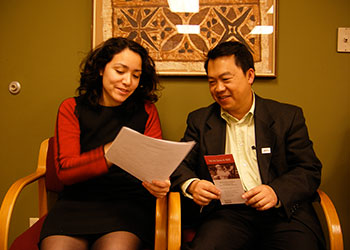News > Fact Sheets
Fact Sheet: Temporary Protected Status (TPS)
Posted on Jan 30 2020
(Updated on 10.09.2023)
Who Has TPS Now and When Does TPS End?
- TPS has been granted to residents of 27 countries and the province of Kosovo since it was created by Congress in the Immigration Act of 1990.
- Only DHS can grant or extend TPS, but Congress could create a pathway to permanent residence for people with TPS
- As of March 31, 2023 there were approximately 610,630 people with TPS living in the United States. In addition, approximately 169,590 people may be eligible for TPS under three redesignations announced by Biden since that date.
- Here is the list of current designations and end dates.
| Country | Status of TPS | Current end date |
| Afghanistan | Extended and redesignated by DHS on September 21, 2023 | May 20, 2025 |
| Burma | Designated by DHS on May 25, 2021 | May 25, 2024 |
| Cameroon | Extended and redesignated by DHS on October 6, 2023 | June 7, 2025 |
| El Salvador | Terminated by DHS, extended by court order, and extended by DHS on June 21, 2023
EADs extended until June 30, 2024 |
March 9, 2025
Also, as long as the preliminary injunction in Ramos remains in effect. |
| Ethiopia | Re-designated by DHS on October 21, 2022. | June 12, 2024 |
| Haiti | DHS announced the extension and redesignation for TPS for Haiti on December 5, 2022.
2011 designation – extended by DHS, EADs extended until June 30, 2024 |
12.05.22: Aug. 3, 2024
11.10.2022 extension: As long as the preliminary injunction in Ramos remains in effect. |
| Honduras | Terminated by DHS, extended by court order, and extended by DHS on June 21, 2023
EADs extended until June 30, 2024 |
July 5, 2025
Also as long as the preliminary injunction in Ramos and the existing stay of proceedings order in Bhattarai v. Nielsen remain in effect |
| Nepal | Terminated by DHS, extended by court order, and extended by DHS on June 21, 2023
EADs extended until June 30, 2024 |
June 24, 2025
Also as long as the preliminary injunction in Ramos and the existing stay of proceedings order in Bhattarai v. Nielsen remain in effect |
| Nicaragua | Terminated by DHS, extended by court order, and extended by DHS on June 21, 2023
EADs extended until June 30, 2024 |
July 5, 2025
Also as long as the preliminary injunction in Ramos remains in effect. |
| Somalia | Extended and re-designated by DHS on January 12, 2023 | Sep. 17, 2024 |
| Sudan | Extended and re-designated by DHS on August 18, 2023
2013 designation – extended by DHS, EADs extended until June 30, 2024 |
08.18.22 – April 19, 2025
11.10.22 extension: as long as the preliminary injunction in Ramos remains in effect. |
| South Sudan | Extended and re-designated by DHS on September 9, 2023 | May 3, 2025 |
| Syria | Extended by DHS and re-designated effective October 1, 2022 | March 31, 2024 |
| Ukraine | Extended and re-designated by DHS on August 18, 2023 | April 19, 2025 |
| Venezuela | Extended and redesignated for 18 months by DHS on September 20, 2023 | Sep. 10, 2025 |
| Yemen | Extended by DHS | March 3, 2023 |
What is TPS?
TPS is a temporary status, granted because conditions in the home country prevent safe return of that country’s nationals living in the United States, or because the home country temporarily is unable to accept their return. TPS has been extended year after year when country conditions have not improved, so that many TPS holders have lived in the United States for decades, with strong ties to work, families, and communities
TPS is granted, ended, or changed by DHS. A country can be designated for TPS due to conditions that prevent the country’s nationals from returning home safely. Granting TPS is entirely within the discretion of the Department of Homeland Security. TPS is granted for three reasons: ongoing armed conflict (such as civil war); an environmental disaster (such as earthquake or hurricane), or an epidemic; other extraordinary and temporary conditions.
TPS applies only to people who are already inside the United States—it cannot be used to apply for entry to the United States.
During the designated TPS period, TPS holders are not removable from the United States and not detainable by DHS based on their immigration status. TPS holders are eligible for an employment authorization document (EAD), and eligible for travel authorization.
Is TPS status given automatically?
No, TPS is not automatic. People must apply, pay a filing fee, and pass immigration screening. The application process can be complicated, and we recommend contacting a licensed immigration attorney. The registration period for eligible individuals to submit TPS applications is stated in the Federal Register Notice for each country with TPS.
How long will eligible individuals have protection under TPS?
TPS is a temporary status, granted because conditions in the home country prevent safe return of that country’s nationals living in the United States, or because the home country temporarily is unable to accept their return. TPS has been extended year after year when country conditions have not improved, so that many TPS holders have lived in the United States for decades, with strong ties to work, families, and communities
People with TPS are not subject to deportation and can get work permits, but TPS does not give them a path to permanent residence or citizenship. Only DHS can grant or extend TPS, but Congress could create a pathway to permanent residence for people with TPS and similar statuses, as it did on December 26, 2019 for Liberians who have lived in the United States since November 20, 2014.
What is the difference between the designation period and the registration period?
The registration period determines how long individuals have to apply for TPS. The designation period determines how long TPS and the protections under TPS are valid.
Contributions to U.S. Society and Economy
The Center for Migration Studies analyzed the TPS beneficiaries from Haiti, Honduras, and El Salvador and found:
- The labor force participation rate of the TPS population from the three nations ranges from 81 to 88 percent, which is well above the rate for the total U.S. population (63 percent) and the foreign-born population (66 percent).
- Roughly 30 percent own homes in the United States.
- About 68,000, or 22 percent, of the TPS population from these nations arrived as children under the age of 16.
- TPS beneficiaries from these nations have 273,000 U.S. citizen children.
- More than one-half of El Salvadoran and Honduran, and 16 percent of the Haitian TPS beneficiaries have resided in the United States for 20 years or more.
- Eighty-seven percent of the TPS population from these countries speaks at least some English, and slightly over one-half speak English well, very well, or only speak English.
- About 27,000, or 11 percent, of those in the labor force are self-employed, having created jobs for themselves and likely for others as well.
For more information:
- Temporary Protected Status (U.S. Citizenship and Immigration Services website)
- Temporary Protected Status (U.S. Department of Justice Executive Office for Immigration Review website)
- A Statistical and Demographic Profile of the US Temporary Protected Status Populations from El Salvador, Honduras, and Haiti (Center for Migration Studies, 2017)
- Temporary Protected Status: An Overview (American Immigration Council)




